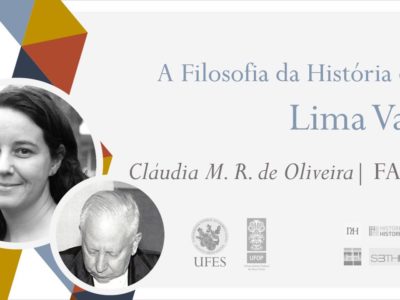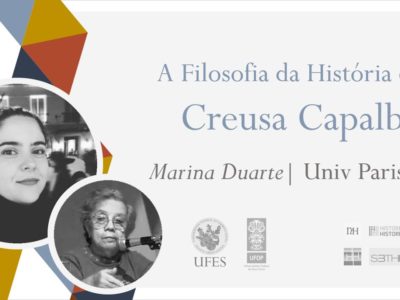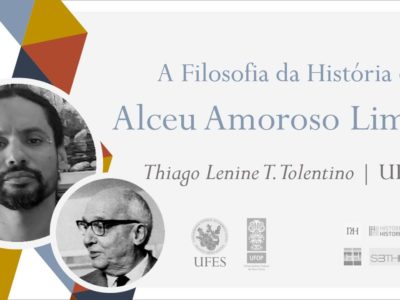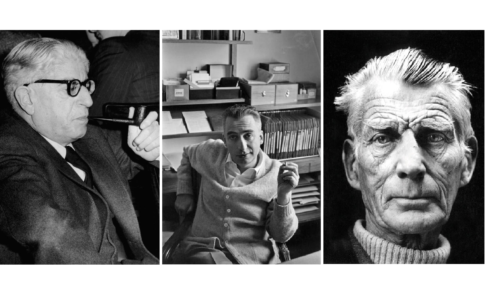In James Wilson’s The Dark Clue: A Novel of Suspense (WILSON, 2001), Walter Hartright and his sister-in-law, Marian Halcombe, set out to investigate the life of the British painter Joseph Mallord William Turner (1775-1851) some years after his death. Walter has been informally commissioned by Lady Elizabeth Eastlake, supposedly to provide a more acceptable account of Turner’s life than a mudslinging biographer named George Walter Thornbury (1828-1876), someone the reader never meets and who actually wrote a biography of Turner, The Life of J. M. W. Turner, R. A. (London: Hurst and Blackett, 1862, two volumes, available at https://archive.org/search?query=creator%3A%22Thornbury%2C++Walter+%2C++1828-1876%2C++George+Walter+Thornbury%22).
With its subject and setting in London at the height of Victorianism, as well as borrowing its protagonists from The Woman in White (1859-1860), a novel by William Wilkie Collins (1824-1889), The Dark Clue is a deeply Victorian novel concerned with respectability and repression. While Walter sets about interviewing people who remember Turner and learns contradictory things about the painter, Marian tries to unearth Turner’s early life through letters and journals, and they are led toward dark secrets in Turner’s life, only to begin to suspect that they are being used for other people’s agenda. The reader is faced with several layers of texts: the notebooks of both the characters, where they scribble notes to themselves; Walter Hartright letters to his wife Laura; Marian Halcombe’s journal, where she writes intimate details to herself; Walter Hartright’s journal and private notebook, where he pours down what he does not want other people to know and where he expresses feelings completely different from what he writes to his wife.
An Instance of the Fingerpost (PEARS, 1997), by Iain Pears, is set largely in seventeenth-century Oxford, and the book is a single story told four times, by four different narrators. Each of them has their own reasons for not telling the truth: they have a desire to obscure or hide from their actions; their perception is coloured by religious or political preconceptions; or they are just mad. The result is that the reader simply does not know the real nature of the plot’s events, resembling In a Grove (藪の中, Yabu no naka, also translated as In a Bamboo Grove), a Japanese short story by Ryūnosuke Akutagawa (1892-1927), first published in 1922, a story that centres on the violent death of young samurai Kanazawa no Takehiro, whose body has been found in a bamboo forest near Kyoto. The preceding events unfurl in a series of testimonies, first by passers-by, an auxiliary policeman and a relative, then by the three main protagonists – the samurai, his wife Masago, and bandit Tajōmaru – but the truth remains hidden due to the contradictory recounts given (AKUTAGAWA, 2006).
The question of “truth” has been a main concern for philosophers and historians alike. On the one hand, Bernard Williams (1929-2003), widely viewed as one of the most important British philosophers of his generation, in his last published book, Truth and Truthfulness, left us with an argument for the importance of the notion of truth to our attempts to think and talk about the world. Rather than concentrating on truth as such, his account focuses on what he identifies as the “virtues” of truthfulness, i.e., accuracy and sincerity, similarly insisting that he is not giving us a history of the concept of truth. Instead, he tells a story or “fictional genealogy” that explains our need for truth and truthfulness, proceeding to detail some of the important ethical consequences of that need, in several historical genealogies of the concepts of truth and truthfulness, and related ideas such as authenticity and self-deception (WILLIAMS, 2002).
On the other hand, the Polish author Adam Schaff (1913-2006), in his History and Truth, dealt with the epistemological premises and the objectivity of historical truth as well as the social conditioning of historical cognition. Both the problem of the model of cognitive relationship and the problem of truth were discussed in the context of true cognition. The book begins with an overview of historians’ conflicting interpretations regarding the causes of the French Revolution to highlight the tendency of historians to differ in their visions of the historical process, resulting in different and sometimes even contradictory representations of one and the same fact. The discussion then turns to three models of the process of cognition (the cognitive subject, the object of cognition, and knowledge as the product of the process of cognition), as well as the concept of truth as a philosophical problem. Subsequent chapters focus on two concepts of history, namely, positivism and presentism; the class character of historical cognition; historicism and relativism; and the selection of historical facts. The book also considers why history is continuously written anew before concluding with an assessment of the objectivity of historical truth (SCHAFF, 1976).
But is “historical truth” truly objective? To help us think about, and illuminate, the subject, Icehenge, Kim Stanley Robinson’s second novel, first published in 1984, is very eloquent. It consists of three stories, connected through time, bearing the names of the narrators and the date of the events, each written in first person narration, and dealing with many themes, with each part complementing or shedding light to the other. In a background setting of the colonization of the solar system and social unrest in Mars, Icehenge explores the effects of longevity on human memory, historical memory, historical revisionism, and the imperfect knowledge of past events. It shifts from a failed Martian revolution in 2248 to an expedition investigating these events and then to an expedition to explore Icehenge, a mysterious monument on the north pole of Pluto, which is perhaps linked to a reclusive and wealthy woman who may hold the key to solving a mystery spanning centuries (ROBINSON, 1997).
The first part, “Emma Weil, 2248 A.D.”, is written as a personal log or memoir, and takes place in the asteroid belt, used by big mining companies, and on Mars, which is controlled by a Mars Development Committee; these essentially American and Soviet colonies serve to supply Earth with ore. Social unrest and emerging revolutionary groups, such as the Mars Starship Association (MSA) and the Washington-Lenin Alliance (WLA), threaten to overthrow the Committee. Emma Weil, a Biological Life Support Systems expert, finds herself amidst an MSA mutiny aboard the Rust Eagle in the asteroid belt: it had been planned for her to take that ship, as the MSA wanted her to work with them, due to her past liaison with a leading figure of the MSA, Oleg Davydov, who also has plans for building a monument to themselves so people in the future could remember that they existed. The ship is joined by two others: Emma is asked to help them with the life support systems, as the MSA plans to convert them into a star ship with eighty years’ autonomy. Emma assists but does not join them. She goes to New Houston, Mars, where she is welcomed by the Texas cell of the WLA and joins the rebellion against the Committee. A guerrilla with Committee forces ensues and she escapes to underground.
In the second part, “Hjalmar Nederland, 2547 A.D.”, Mars is greatly populated and partly terraformed, and is an American and Soviet colony fully under the control of the Committee, which revises history to arrange each new discovery from the past, integrating new facts in a way that these make sense with what is the “official history”. The WLA revolution of 2248 is known as “the Unrest” and the WLA is considered to have never existed. People have gerontological treatments that extend their life spans, but do not prevent memory loss. Hjalmar Nederland knows that official history is not true because he remembers being there when the police attacked the civilians, and he remembers because he feels while recollecting the events. Thanks to his Committee contact (and relationship), Alexander “Shrike” Selkirk, Hjalmar Nederland and a team of Mars archaeologists arrive at the ruins of New Houston and carefully start a dig, trying to build a case with concrete proof. They discover a buried field car that the rioters had used to escape, full of documents, names, plans, and Emma Weil’s journal. A Committee press conference by Alexander “Shrike” Selkirk presents their finds: WLA should be seen as heroes for things that are now taken for granted.
In the meantime, the Persephone expedition discovers Icehenge on Pluto, and after a year at the dig, Nederland goes back to Burroughs and publishes a theory about Icehenge being built by MSA. In Alexandria, he researches the archives and asks to get access to classified documents, finding evidence of Oleg Davydov, the disappearance of two spaceships and confirms the existence of the MSA, publishing throughout. A year later, Nederland is back at the New Houston dig, and goes on a long expedition through Martian terrain alone, to find out what some dots on a WLA map were. He has to go on foot with a cart and limited oxygen. He thinks he sees Emma and follows her to a lookout spot, loses her, ends up spending a night in exposure and hiking back with nearly no oxygen, wondering whether he had a hallucination. He returns back safe with a resolve to keep pressuring to make Mars free, and he will head an expedition to dedicate Icehenge to those killed in the Unrest, ironically for the 350th anniversary of the convening of the Committee.
In part three, “Edmond Doya, 2610 A.D.”, the Solar System is colonized, and people often move from colony to colony throughout their lives. The Waystation, a hollowed-out asteroid, owned by Caroline Holmes, a shipping magnate with a low public profile, shuttles between planets. Edmond Doya (incidentally, Nederland’s great-grand-son) spent his childhood with his father on the Jupiter moons, reading all of Nederland’s works and writing a book on Davydov. He moved to Titan alone, doing manual jobs, discussing philosophy at his boarding house, and becoming a self-made scholar on Martian history, and getting published. He had a life-changing experience when drunk on New Year’s Eve he came across an old stranger that said very convincingly that he had built Icehenge. Doya lived on the Waystation for fifteen years, setting out to find out the truth about Icehenge, tracking down records from across the Solar System, painstakingly making connections and seeing patterns, doubting findings from other experts, saying the New Houston findings were planted. He eventually becomes a lecturer at the Waysation Institute for Higher Learning (founded by Holmes) and develops the “Caroline Holmes theory”: born in 2248, she would have built Icehenge with her own ships.
He is invited by Holmes to her abode, Saturn Artificial Satellite Four, in polar orbit around Saturn. They have lunch, visit the SAS’s telescope observatory, and he has a dream that she is accusing him of destroying Nederland’s work: was she somehow manipulating his dreams? He tells her everything about his search and she responds calmly that all evidence is circumstantial and will not have him associate her with it. Edmond dares her to finance an expedition and later he identifies and breaks into a large, locked space at her home: a perfectly realistic reconstruction of Icehenge on a smaller scale in a small planetarium, with laser beams that connect liths and prolong to stars. Edmond senses she had meant him to find the model and gets a feeling of already knowing her.
Edmond joins the Snowflake expedition to Pluto, which Nederland refuses, an attitude that irritates him, and he tiredly argues his academic position with other specialists onboard. One of them, Arthur Grosjean, a member of the original Persephone expedition, theorizes that Icehenge’s geometric design is based on ancient Celtic patterns; another, Theophilus Jones, has pulp theories about ancient astronauts. On Pluto, they reach Icehenge and the Nederland expedition commemorative plaque on it reads:
This Marker Has Been Placed Here
To Honor the Members of the
MARS STARSHIP ASSOCIATION
Who Built This Monument Soon After the Year 2248 A.D.
To Commemorate the Martian Revolution of 2248 And To Mark Their Departure From the Solar System.
There Will Never Come An End to the Good That They Have Done.
They study Icehenge for weeks, and through numerology and the megalithic yard, Jones discovers connections through the liths; the top of the tallest lith points to Pluto’s North Star and Edmond is reminded of the laser pointing upwards in Caroline’s model. They discover a hollow lith and descend through it: they find a cobalt blue ovoid chamber, with red streaks of changing patterns. Analysis and dating connect this to Holmes, confirming Doya’s theory. However, another theory states that the Perspehone crew built it before ‘discovering’ it. Jones makes a new theory: the Davydov expedition really happened, and Emma’s journal is genuine; years later, Emma became Caroline; she visited Pluto, saw that the MSA had left no trace there, and built Icehenge; she wanted to slip the truth back into the world and fabricated evidence and planted it…
REFERÊNCIAS:
AKUTAGAWA, Ryūnosuke. In a Bamboo Grove. In Rashōmon and Seventeen Other Stories. Selection, Translation, and Notes by Jay Rubin. Introduction by Haruki Murakami. London: Penguin Books, 2006, p. 10-19 [tradução portuguesa: Rashōmon e outras histórias. Amadora: Cavalo de Ferro, 2019].
PEARS, Iain. An Instance of the Fingerpost. London: Jonathan Cape, 1997 [tradução portuguesa: O círculo da cruz. Lisboa: Livros do Brasil, 2004].
ROBINSON, Kim Stanley. Icehenge. London: Voyager, 1997 [1984].
SCHAFF, Adam. History and Truth. Oxford: Pergamon, 1976 [tradução portuguesa: História e Verdade. Lisboa: Estampa, 1974].
WILLIAMS, Bernard. Truth and Truthfulness: An Essay in Genealogy. Princeton, NJ: Princeton University Press, 2002.
WILSON, James. The Dark Clue: A Novel of Suspense. London: Faber and Faber, 2001 [tradução portuguesa: A pista negra. Lisboa: Ulisseia, 2002].
Créditos na imagem: Reprodução: Horizontes democráticos. Adelson Vidal Alves. 2022.








No comments